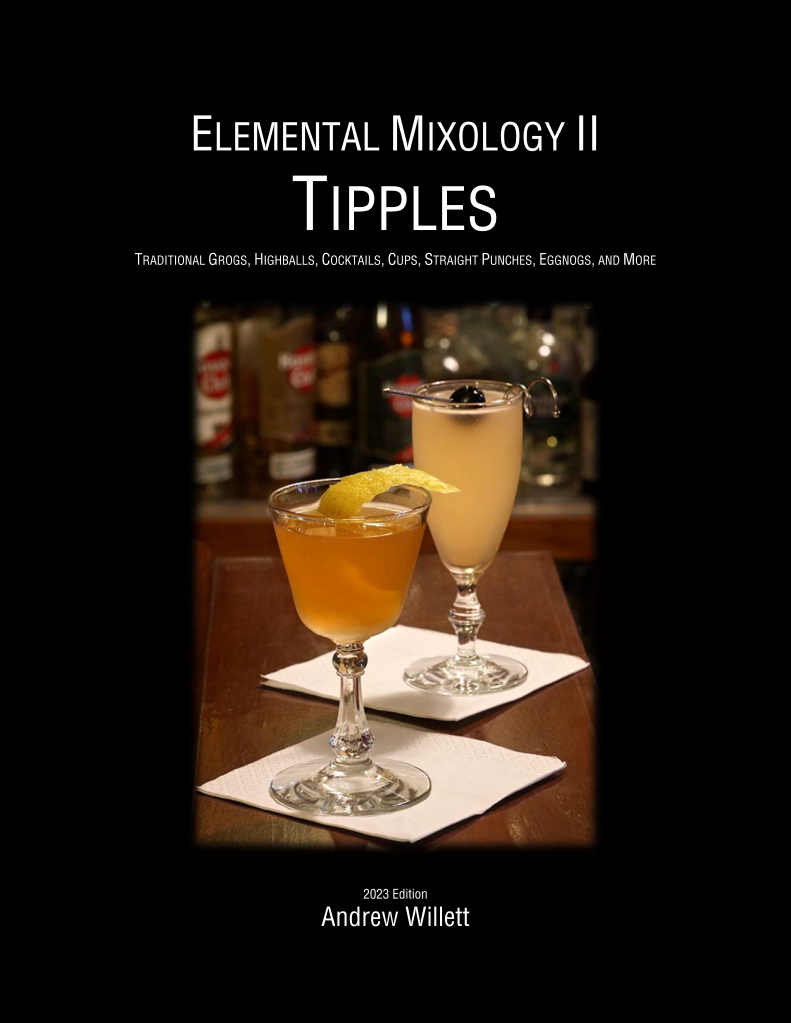
I often chuckle while witnessing bar-tenders today mimicking advances in drink-making that were revolutionary in 1855 – and thinking them to be new.
One example is as using sugar syrup (instead of dry sugar) in true cocktails and stirring them cold through plenty of ice.
Today, bar-tenders imagine that applying the above methods to the Old-fashioned Whiskey Cocktail improves it. They are right – but the improvement was already done within a few years of 1855. It was then that method for making the Whiskey Cocktail were changed to take advantage of pure water and ice suddenly becoming cheap and plentiful, allowing for simple syrup to be cheap and plenty of ice to be available for stirring with and straining from.
Modern bar-tenders, you’re almost there. All you have to do now to catch up with 1855 is to strain your Whiskey Cocktail just as you would a Manhattan Cocktail – and, for the same reasons.
Of course, if you don’t know the traditional meaning of the word cocktail, you probably are a little lost here. Come take my classes.
Suffice it to say that once the Whiskey Cocktail was made with sugar syrup and stirred with ice and strained into a goblet for a perfectly cold drink that would never get further diluted, the older, inferior way of making the Whiskey Cocktail produced the drink that after 1855 was called the Old-fashioned Whiskey Cocktail.
Yes, I am saying the the Old-fashioned Whiskey Cocktail (probably just “Old Fashioned” to some benighted readers) is inferior to the Whiskey Cocktail. Between 1860 and 1900, the Whiskey Cocktail, made the modern way and strained and served without any ice, was one of the most commonly-served drink in American bars. It was served more commonly during those forty years than the Old-fashioned Whiskey Cocktail. What a shame that the inferior of the two is the only one that is easy to obtain in our own time.
Now modern bar-tenders are making the Whiskey Cocktail almost as good as it was in 1855 (if only they would stop serving it on ice) and imagining that this is something new and the product of sensitive consideration. It is laughable.
Likewise devoid of any traditional knowledge is the imagining that there is something new – down to giving it a new typological name – to the so-called Lift.
Truth be told, this type of drink goes at least as far back as 1883. An American bar-tender from then would look at the so-called Bourbon Lift and recognize it to be an especially-fancy reworking of the Bourbon Puff. If had I been the bar-tender that created it, I would have made clear through naming it that I understood American mixological tradition and history enough to call if a Puff – instead of making up a new name that suggests ignorance of tradition. I also would have understood it to be far too fancy to just call it the Bourbon Puff. I might have called it the Special Bourbon Puff or maybe the Bohemian Cowboy Puff. But a plain name for a fancy drink, combined with an obvious ignorance of American drink types (a consequence of the grasping overuse of ‘cocktail’), shrouds the publication of a very good drink in the mists of ignorance.













